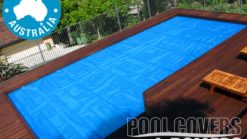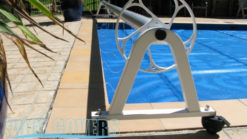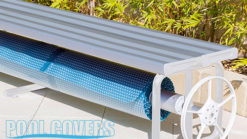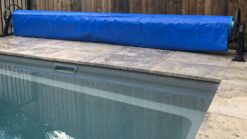Buyers Guide to Pool Covers
Buyers Guide to buying Pool Covers Choosing the best pool cover for your needs can be a daunting task, especially with the variety of options
Let’s face it, buying a swimming pool for the family to enjoy is a very big investment out of any household budget, and to get a descent return on that investment it needs to be used and enjoyed as much as possible.
So, the notion that it can only be used for say six or seven months when the weather is warm and not used for the remainder of the year doesn’t seem to maximize the return on investment we would like. Kind of like buying a car and having it in the garage for six months every year.
Therefore, more and more these days, swimming pool buyers are also opting for the inclusion or pool heating systems to get closer to that year-round usage. But the problem with pool heating systems alone is that swimming pools are large bodies of water and can take a long time to heat up. This is especially true in outdoor pools where the pool heater introduces heat into the water from below the surface only to see that heat escape out of the water into the atmosphere. This makes the heating up process slow and costly especially if the pool heating system is powered by gas or electricity.
This is where a pool cover can be a great addition for the pool owner to have as it traps the heat that is introduced into the water from below and keeps it there. That way the water comes to the desired temperature much faster and therefore saves money because the pool heating system does not take as long to get the heating job done. It actually works the same way as trying to boil a pot of water with either the lid on or off. Having the lid on makes the pot come to boil much faster.
Solar bubble pool covers and thermal foam pool covers would be the two most common types of cover recommended by pool heating companies to help their pool heating systems do their job.
Of these two types, thermal foam pool covers are marginally more effective than solar bubble pool covers. However the thermal foam pool covers are approximately two or three times the price of the solar bubble pool covers and the differential in performance would not justify the difference in price in my opinion.
What is more, the foam pool covers are a great deal heavier when wet than the bubble pool covers and may even require a larger grade of pool roller to handle them.
Bubble pool covers are also much easier to install especially for a novice installer, as all you require is a pair of sharp scissors to cut the cover into the pool, whereas the thermal cover can be a much harder proposition and may even have to be precut and shaped at the factory prior to delivery which of course carries a cost as well.
Solar bubble pool covers are in our opinion the great allrounder.





Buyers Guide to buying Pool Covers Choosing the best pool cover for your needs can be a daunting task, especially with the variety of options

People always need answers to their pool-heat-pump-related questions, and one of the key questions we get asked is: how does a heat pump pool heater

Once you know the correct pool heat pump size required for your pool, you can confidently buy a unit that ensures you have the perfect

We all love swimming in heated pools, and especially in the colder winter months. So it makes sense to purchase a high-quality, energy efficient heat

|
Uploaded
Failed
|
 |